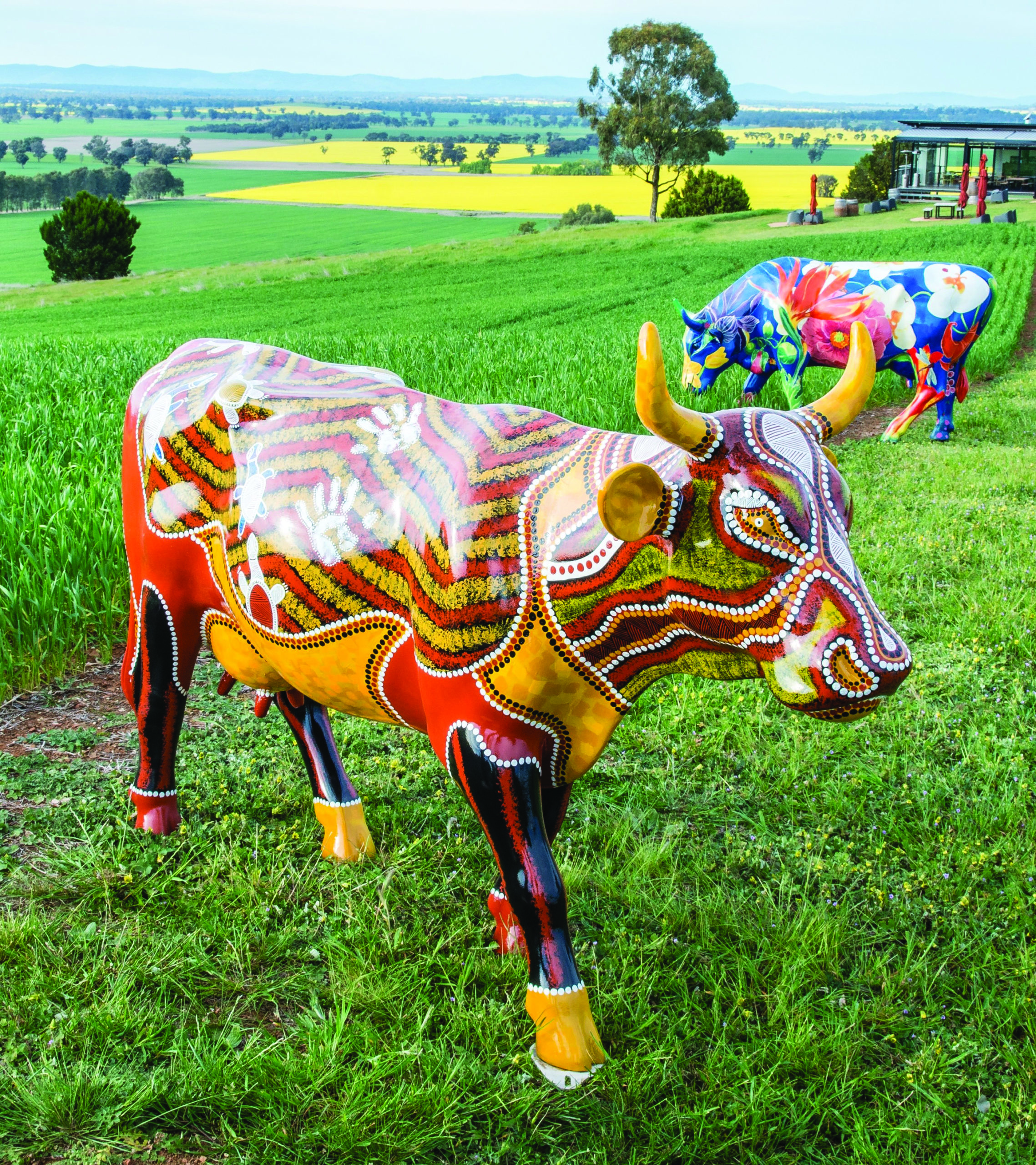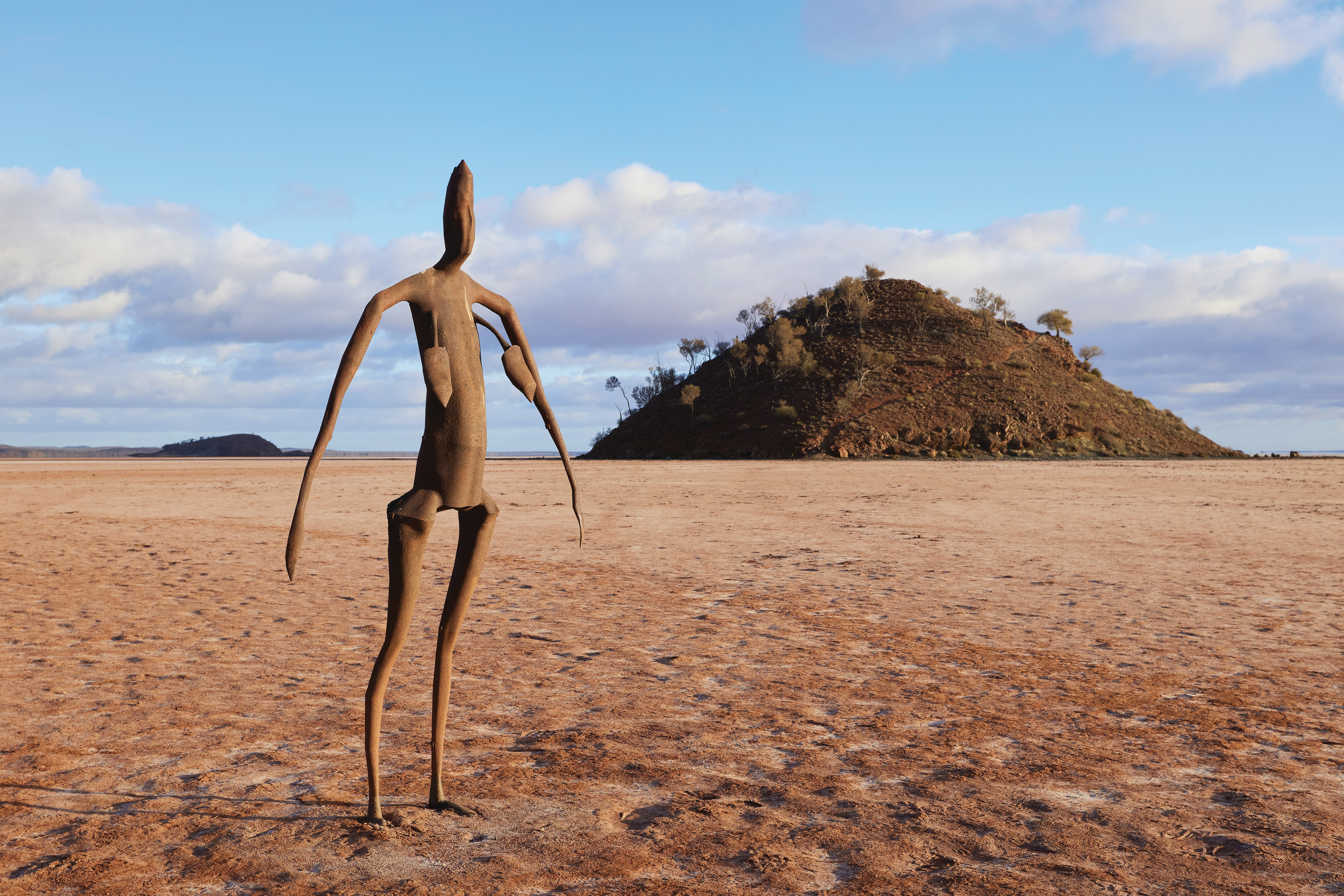
Wild At Art
Australia’s vast and diverse landscapes provide the perfect frame for modern creative talent, as well as a natural galley for hosting ancient Indigenous images. Here are eight places to immerse yourself in outdoor art.
WORDS Patricia Maunder
Why limit your experience of art to indoor galleries when it’s also waiting in Australia’s great outdoors? From desert to sea, timeless Aboriginal rock art to 21st-century light installation, there’s so much to discover across our vast island home. You don’t have to be an art aficionado to feel inspired by this creativity on a grand scale.
THE RED CENTRE’S LIGHT SHOW
What began in 2016 as a temporary exhibition has so enchanted all who see it that there’s no end in sight for Uluru’s Field of Light. Also known as Tili Wiru Tjuta Nyakutjaku, which means ‘looking at lots of beautiful lights’ in the Pitjantjatjara language, this epic installation was conceived by British artist Bruce Munro during a 1992 Red Centre holiday.
His vision materialised on a modest scale elsewhere in the world, before being fully realised in the place that first inspired him with its light, heat and energy. Spread across the equivalent of seven football fields, more than 50,000 stems are topped with lights that sway in the breeze and gradually change colour through a desert palette from ochre to blue.
Visitors arrive when Uluru is still visible in the background, splashed with sunset hues then silhouetted against the dusky sky. As the stars begin shining above, you can wander the paths winding through Munro’s magical glowing meadow. On Outback Spirit’s Red Centre and Field of Light Spectacular six-day tour, your visit includes twilight drinks, canapes and expert insights at an exclusive dune-top viewing area. It’s the ultimate spot to introduce this awe-inspiring experience. outbackspirittours.com.au.
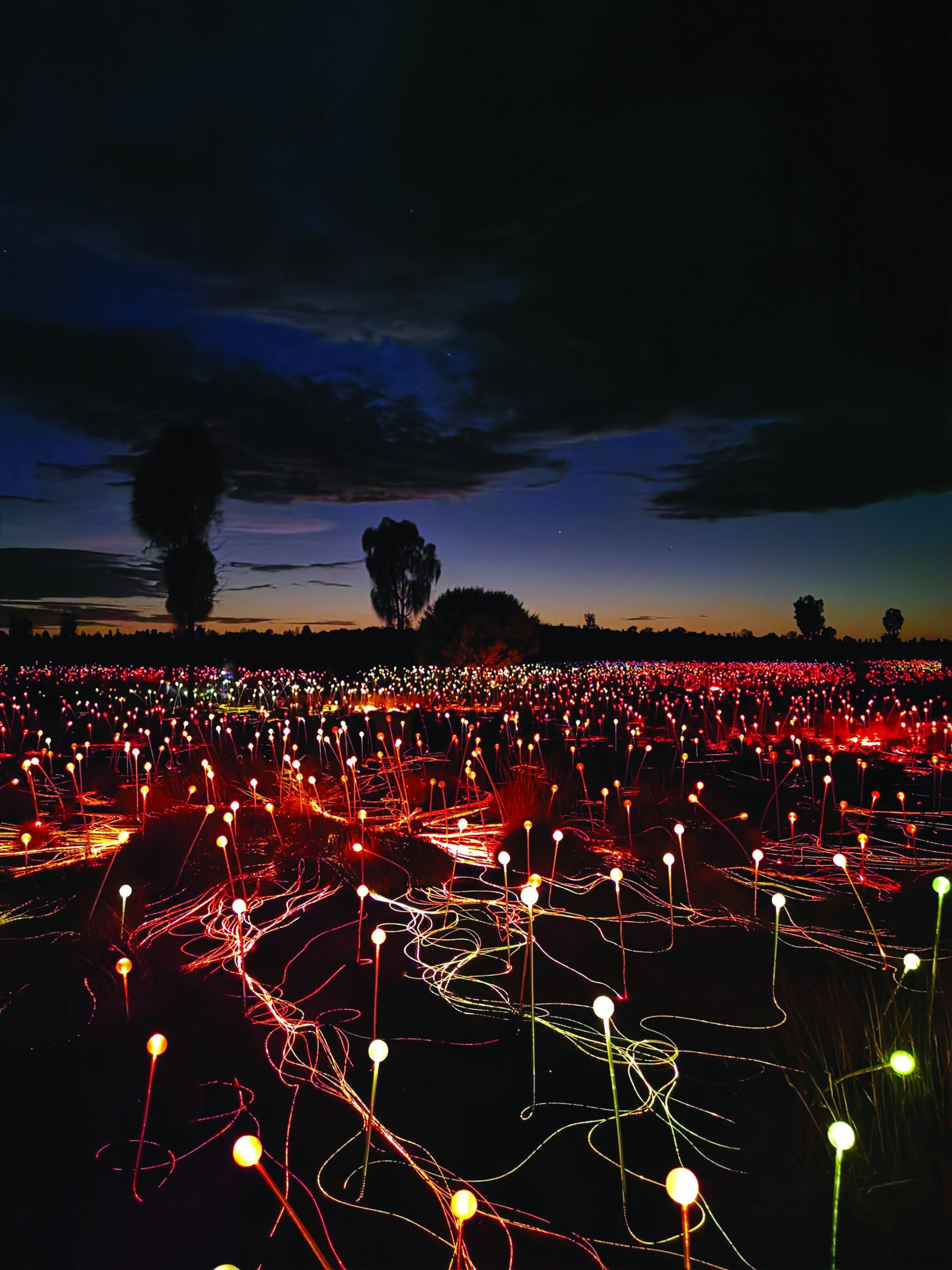
QUEENSLAND’S AQUATIC ART
A spirit of adventure is usually required to see the work of Jason deCaires Taylor, a British artist and marine conservationist renowned for the underwater sculpture gardens he’s created everywhere from Norway to Indonesia. The starting point of his first southern-hemisphere project, the Museum of Underwater Art, is easily spotted, however. Erected in 2017 alongside Townsville’s Strand jetty, the four-metre-high Ocean Siren statue glows at night, its coloured LEDs indicating the water temperature below.
The main attraction is 80 kilometres out to sea and can only be experienced by diving or snorkelling. Your effort is richly rewarded with serene sculptures of plants and ‘reef guardian’ children inside and around a submerged, open structure called The Coral Glasshouse. It’s all gradually being transformed by marine life growing on and sheltering within the installation – including coral planted by this not-for-profit museum that’s set to expand to Magnetic and Palm islands. moua.com.au.

DESERT SCULPTURES IN NSW
It’s best known as a mining town, but Broken Hill has a few surprises up its sleeve – like the 2,400-hectare Living Desert Reserve, which includes a flora and fauna sanctuary, an Aboriginal cultural walking trail and 12 extraordinary sculptures. Gathered on the top of a hill, they emerge from the semi-arid landscape of rocks and scrub, each with a different style and story to tell. Soon after the reserve was established in 1992, a dozen local and international sculptors conjured these monumental artworks on-site from 53 tons of Wilcannia sandstone. They include Tiwi Totems by Gordon Pupangamirri, an Indigenous artist from the Tiwi Islands, and Bajo El Sol Jaguar, which is apparently the most photographed work. Mexican artist Antonio Nava Tirado drew on his Aztec ancestors’ beliefs about the sun and moon to create its striking circular forms.
Broken Hill is out of the way for most of us, but not when you’re travelling on the Indian Pacific out of Sydney. The train stops here, allowing ample time for the one-kilometre stroll among these sculptures. Linger a while to ponder their meaning, observe their golden hues and shadows shifting with the daylight, and marvel at that endless outback vista. journeybeyondrail.com.au.
“Observe their golden hues and shadows shifting with the daylight, and marvel at that endless outback vista.”
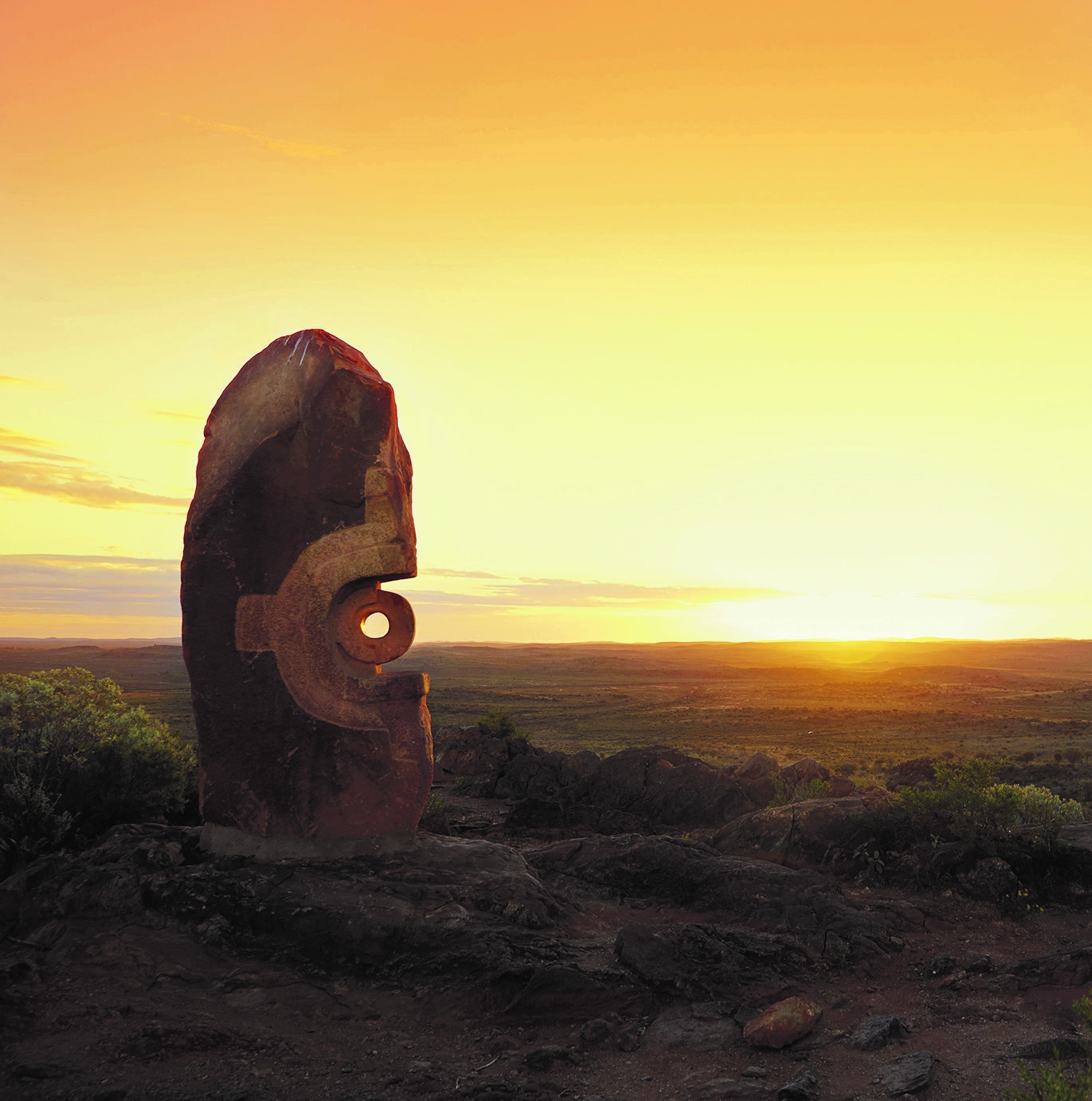
ANCIENT ART IN THE TOP END
Nitmiluk National Park is a landscape of waterfalls, pools, caves, dramatic escarpments and 13 interconnected ravines carved through red sandstone by the Katherine River. It also has at least 400 rock-art sites, where the Jawoyn people have recorded their lives and Dreamtime stories with ochre for millennia.
Important figures in these creation stories include Nabilil, who named this area Nitmiluk after the cicadas he heard chirping here, and Bolung, the Rainbow Serpent, believed to still dwell in the gorge’s green pools. Most significant of all is Bula, who created this landscape and left his image as paintings in rock shelters.
Many of the park’s art sites are difficult to access or closed to the public, but there’s one that guests on The Ghan can easily visit with an Off Train Experience: the Katherine-Nitmiluk First Gorge Art Cruise. On this leisurely boat ride, your eyes will be drawn up the gorge’s high walls while the local guide shares insights about this ancient land and its people. Then, step off on the rock bar separating the first and second ravines and walk a short distance to see awe-inspiring art created around 40,000 years ago. journeybeyondrail.com.au.
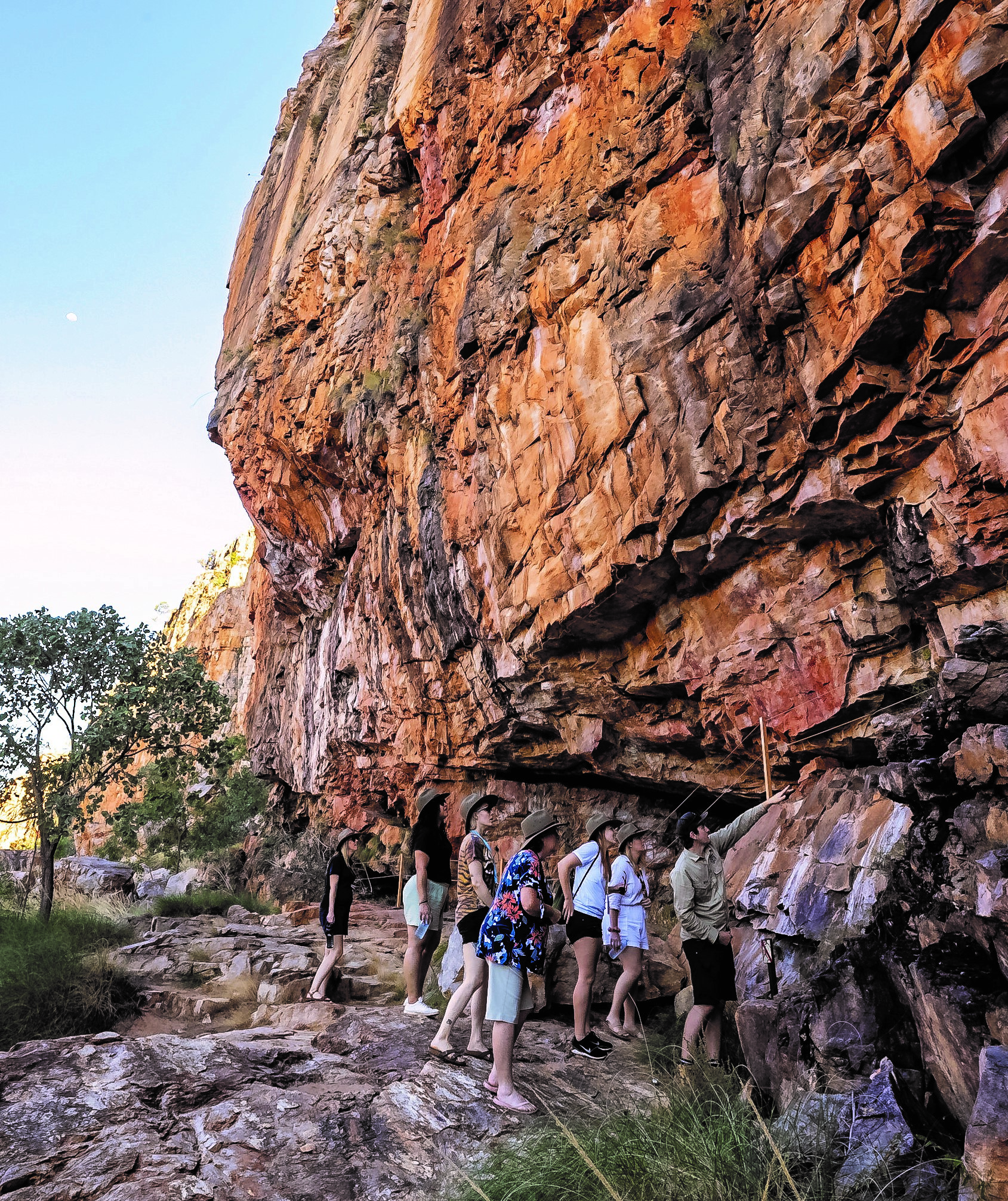
SOUTH AUSTRALIAN SILO ART
Art has been transforming grain silos across Australia’s wheat belt in recent years, and also stimulating local economies when visitors come to see what the fuss is about. In South Australia, 15 sets of silos – and counting – have gone from big blank canvases to massive murals since 2017. These concrete towers, some of which soar to around 30 metres high, now stand out in a good way on the rural landscapes beyond Adelaide.
The state’s silo-art highlights include the town of Kimba’s beautiful image of a child in a wheat field set against a vivid sunset, and Tumby Bay’s carefree kids jumping off a jetty. In Karoonda, see a mural of woolly sheep by day, and an evolving program of art projections by night. Quorn and Wallaroo have gone all-in with silo projections, combining animation, photos and soundtracks. australiansiloarttrail.com.
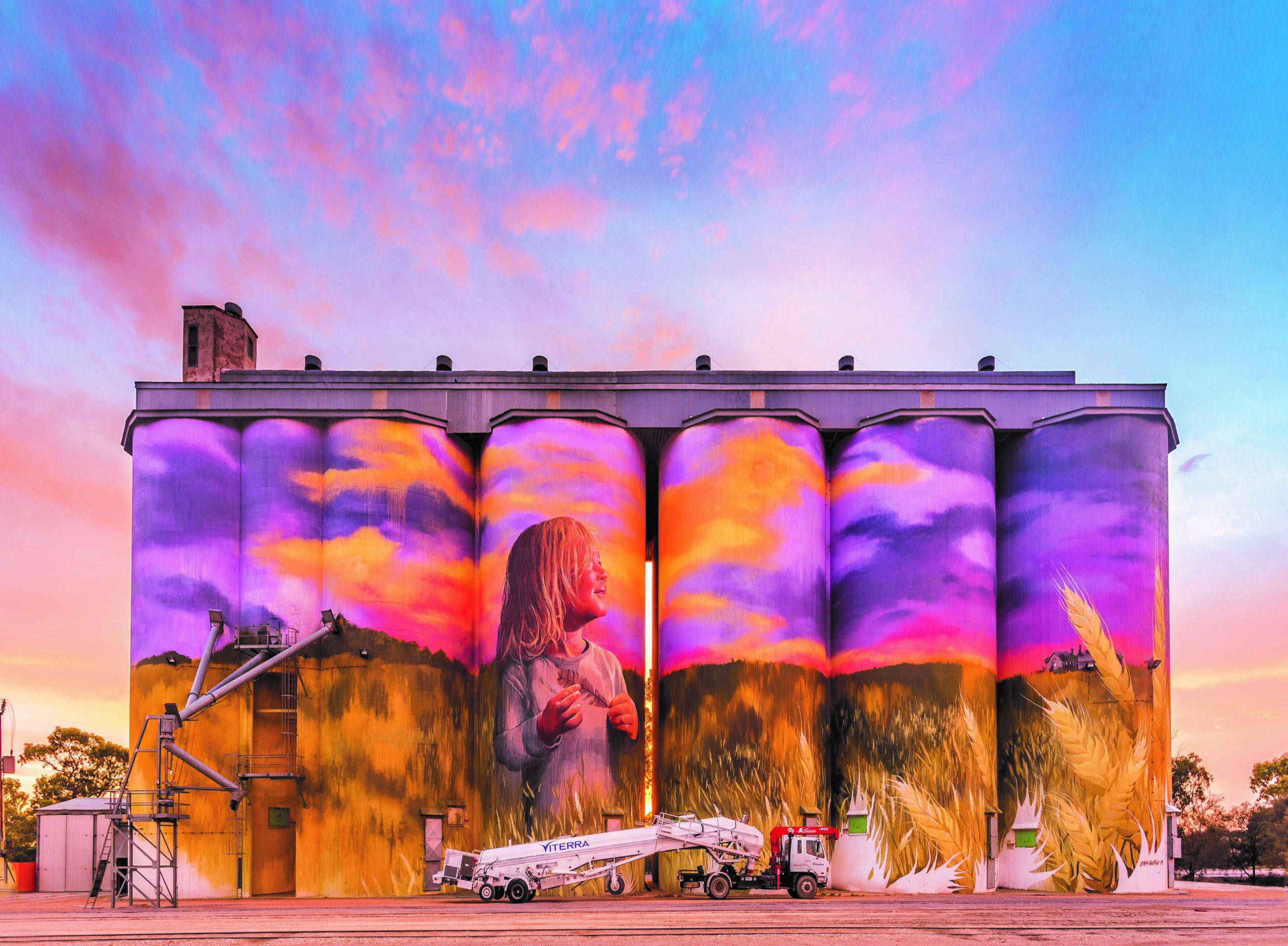
WA’S SALTY SENTINELS
Watching over the English countryside, Antony Gormley’s giant Angel of the North is among the world’s most famous outdoor sculptures. You might be surprised to learn that 51 works by the same British artist are in the middle of nowhere, 130 kilometres north of Kalgoorlie. Once you see the landscape, however, you’ll understand why Gormley was drawn here for his 2003 Perth International Arts Festival commission.
“Step off on the rock bar separating the ravines and see awe-inspiring art created 40,000 years ago.”
On Lake Ballard, a flat, white salt pan so immense it disappears beyond the horizon, his strange, spindly metal figures stand far apart, emphasising this land’s isolation. Modelled on local residents, and collectively known as Inside Australia, they are tenuously connected by trails that form when visitors disturb red mud beneath the salt. Whether shimmering in heat haze, casting long sunset shadows, or staring at their reflections in puddles after rare rainfall, these sculptures make you stop and think. lakeballard.com.
TASMANIA’S MURAL TOWN
Forty years ago, before places being reborn through cultural tourism was a thing, the people of Sheffield had the radical idea of reviving their town’s fortunes with murals. Since the first was painted in 1986, and especially after the annual Mural Fest began in 2003, more than 130 largescale artworks have enlivened dreary walls.
This vibrant, accessible street art celebrates the area’s past with scenes such as a horse drawn mail coach thundering into town, and farming with steam-powered machinery. It also showcases the surrounding wilderness including iconic Cradle Mountain. Watch this year’s nine Mural Fest finalists painting for the top prize at Sheffield’s Mural Park on 7-11 November. Get geared up at the visitor centre for an audio tour of this little town’s great outdoor gallery. sheffieldtasmania.com.au.
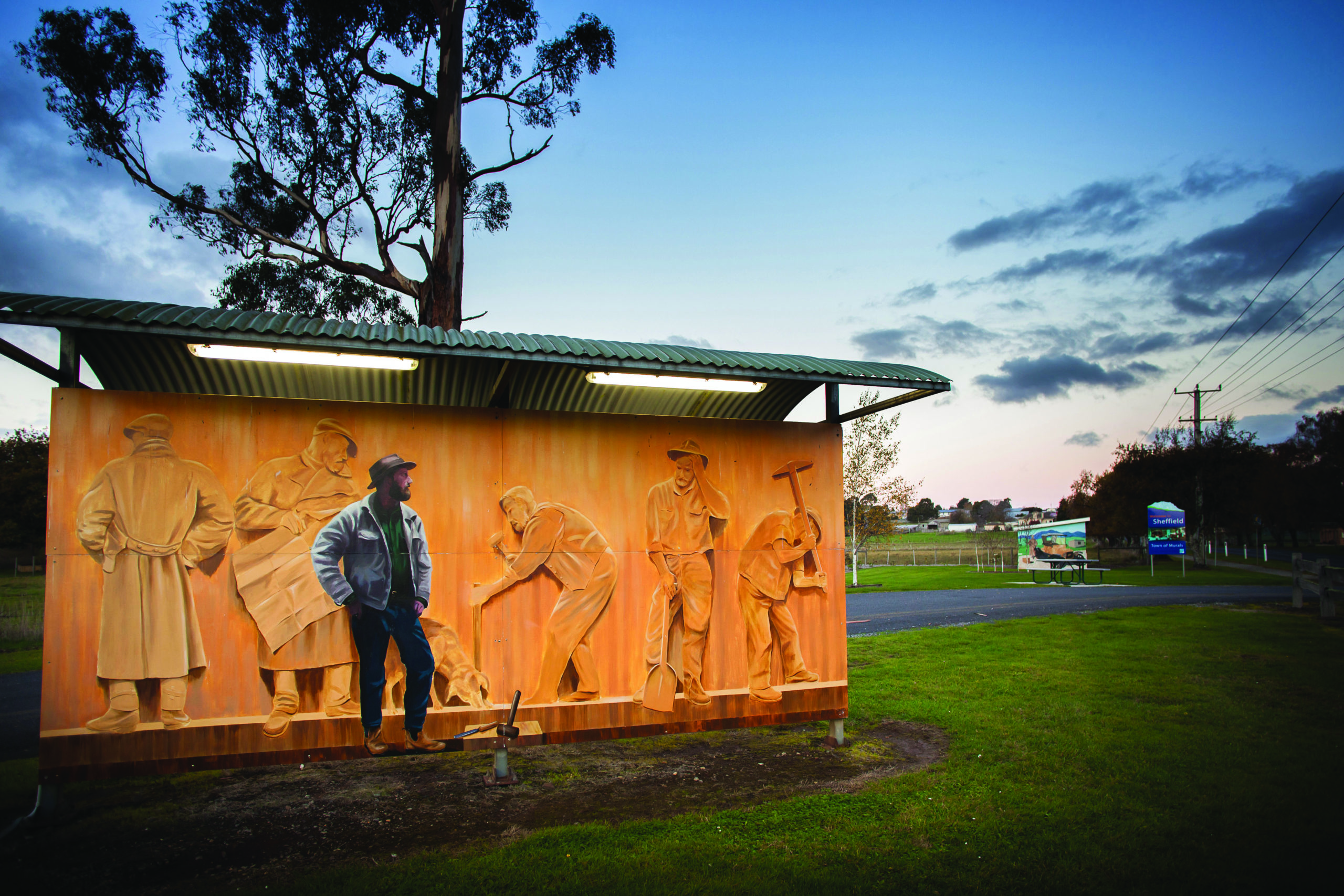
ART THAT MOOOVES IN VICTORIA
Back in 1999, Shepparton celebrated Christmas its own way with some cow sculptures called the Merry Moos. This city is at the heart of a major dairy region, so naturally they were popular. So popular in fact that these bovine beauties immediately inspired an ever-evolving alfresco exhibition called Moooving Art that’s still going strong today.
For more than 20 years, the City of Greater Shepparton has invited established and emerging artists to paint their herd of 90-plus life-sized fibreglass cows. Each is different: perhaps an homage to a famous artwork, fun designs like strawberries and cream, or themed around special events and celebrations. These individually named cultural ambassadors also keep moving around town and beyond – though you’ll always find several striking a pose in Monash Park. visitshepparton.com.au.
